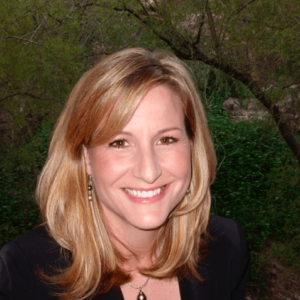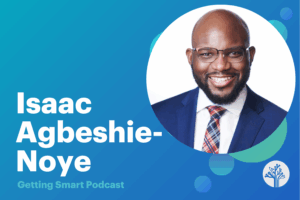Fostering Next Gen Learning: a Q&A with iNACOL’s Susan Patrick

TVA: What does engagement have to do with iNACOL’s next gen models agenda?
SP: Building engagement with all stakeholders in a community – starting with students, parents, teachers, community leaders and employers – creates an important ecosystem for supporting and deepening understanding of a community’s needs around what students need to know and do to be competitive in a global society. Identifying the competencies, which should include academics plus important skills and dispositions, for students to be successful in the future is key.
TVA: New progress reporting strategies that come with competency-based learning can be controversial, does that mean engagement is important?
SP: Where new models focusing on student competency-based pathways are emerging, communities have come together to re-imagine and vision how they educate, engage and empower their students; how teachers design learning to promote student agency and ownership; and discuss how to create learning environments where students and teachers are partners in education. With a strong ecosystem involved in the policy, practice and community, moving toward educational transformation built around competency can take hold through open collaboration among all stakeholders.
TVA: what are the implications for educator prep?
SP: We must redefine educator preparation for the needs of teachers and students in the 21st century. Teachers need to be prepared with the tools to personalize instruction and expand open, digital content resources to help them succeed and meet each student’s individual needs. This requires a call to action for schools of education to transform their educator and leadership preparatory programs — rethinking talent development for a modern workplace in education. Educator preparedness needs to examine how to implement digital learning models requiring students to engage deeper learning through personalized, mastery-based pathways. Adults seeking professional development need flexible options with personalized pathways that fit their own needs – and to demonstrate competencies for advancement, too.
TVA: What about professional development?
SP: Districts on the leading edge are finding they must create their own internal talent development and human capital investments to better prepare people with new skills to plan, manage and implement effective new learning models that use advanced technologies to dramatically improve student learning engagement and results. People are the core designers and builders of new, engaging digital learning opportunities – and this requires re-examining and building adaptive skills for leaders and educators, and new job descriptions and methods for hiring, educator supports and evaluation. Districts are actively re-imagining the competencies, skills, processes and pathways they employ at the system level to ensure the needs of staff and students are met throughout diverse learning environments.
TVA: What’s the link between next gen models and equity?
SP: The last ten years have seen unprecedented transformation of teaching and learning as educators grasp the power of new learning models to close achievement gaps. The next few years hold great potential to continue the incredible progress achieved – with new learning models that allow personalization of instruction for each student, and a shift towards competency that will ensure teaching and learning is build on a foundation of true mastery. These advances hold the potential to close achievement gaps, prepare more students for college and career, and reduce inequities in our education system. True accountability that is student-centered is needed to bring systems of assessments with local evidence from student-centered instructional models into the hands of practitioners to do what is best for student needs – and to focus on equity for ensuring every student develops the skills they need to be successful.
TVA: that suggests huge local, state, and federal policy shifts; what are the advocacy implications?
SP: Policy advocacy is critical for building lawmaker understanding on how these new, competency-based learning models work. Personalized learning models that are powered by digital learning can address gaps, support equity, quality assurance and resource limitations. Seeing the potential of innovative models and how they may begin to challenge assumptions locked in antiquated policy on teacher distribution, student-centered models of accountability and systems of assessments to become more aligned with student-centered learning requires shifting one’s perspective toward the future, with an unwavering focus on doing what is right for kids. New learning models can provide powerful solutions to the systemic needs for addressing equity and resources – and policy development can provide barriers or serve as an enabler to maximizing and optimizing learning for student success.
 Susan Patrick is the President & CEO of the International Association for K-12 Online Learning (iNACOL). iNACOL is a nonprofit providing policy advocacy, national quality standards, research on best practices, next generation learning models professional development and networking, driving the emerging field of competency-based, online and blended learning forward. Before joining iNACOL, Susan Patrick was the Director of Educational Technology at the U.S. Department of Education.
Susan Patrick is the President & CEO of the International Association for K-12 Online Learning (iNACOL). iNACOL is a nonprofit providing policy advocacy, national quality standards, research on best practices, next generation learning models professional development and networking, driving the emerging field of competency-based, online and blended learning forward. Before joining iNACOL, Susan Patrick was the Director of Educational Technology at the U.S. Department of Education.






0 Comments
Leave a Comment
Your email address will not be published. All fields are required.